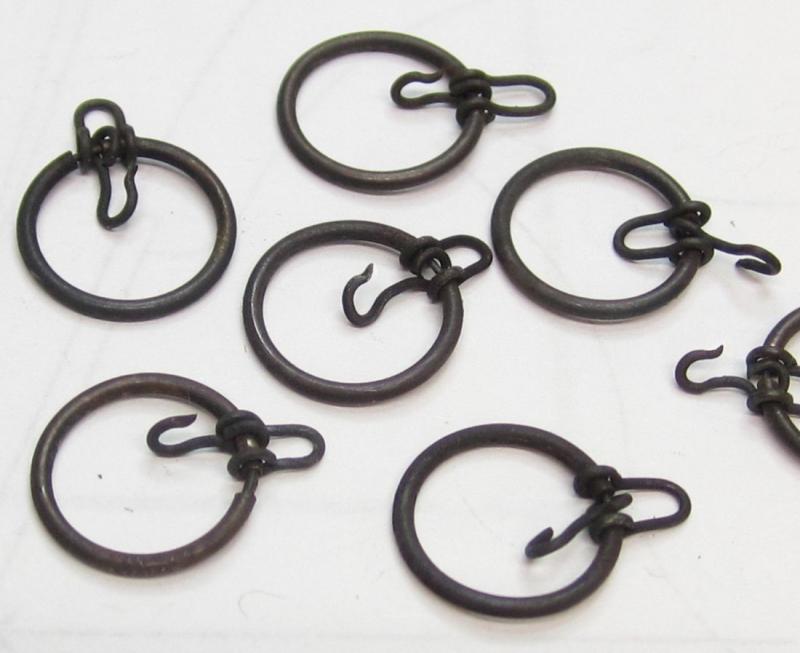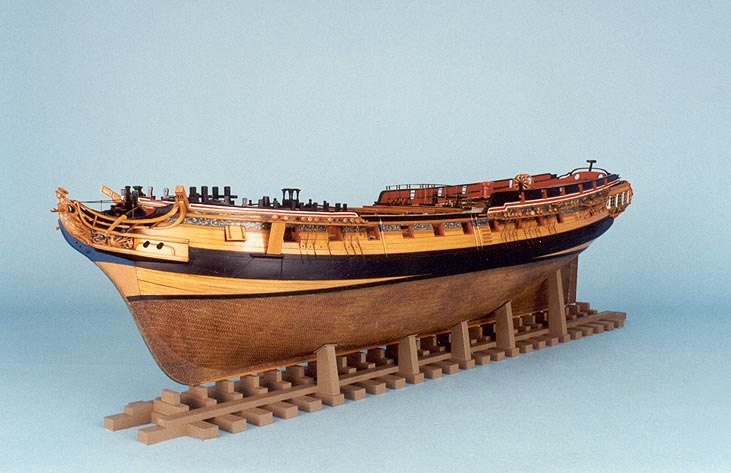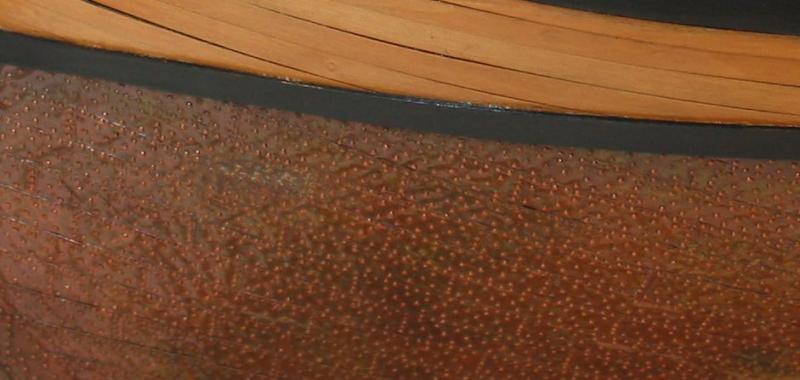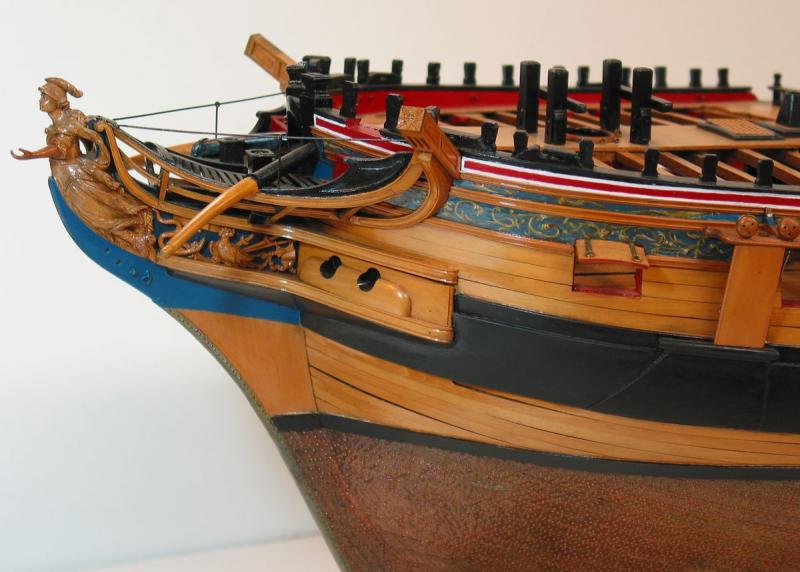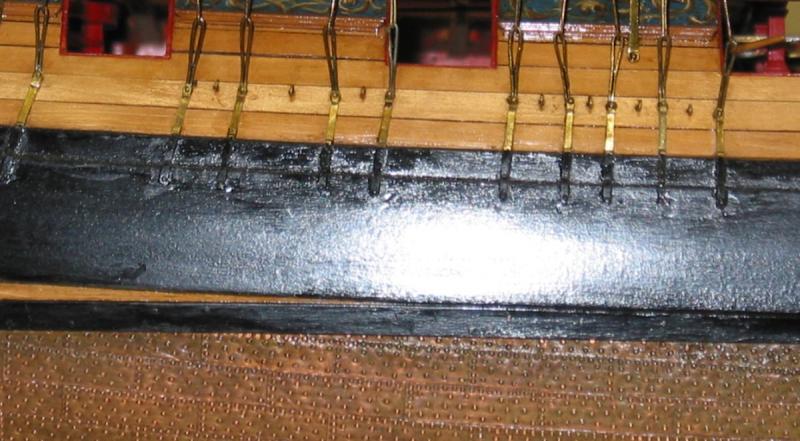-
Posts
9,504 -
Joined
-
Last visited
Content Type
Profiles
Forums
Gallery
Events
Everything posted by Chuck
-
Nicely done Mike.....only a few more to go.
- 452 replies
-
- cheerful
- Syren Ship Model Company
-
(and 1 more)
Tagged with:
-
I am about to make the two yards for Cheerful and the center of each is eight sided. So I am going to start with a square stick and then turn it into an Octagon. I will round off the ends and taper them afterwards. I am using the 7/10/7 template to mark the stick so I can create the eight sided shape. When I was preparing my square stock I thought that everyone would probably benefit from the template I am using and created. It will save you time so you dont have to make one. Attached is a PDF template that is prepared with the correct ratios. I have been using it all along to make the masts and other spars. Its a very handy template to have. seventenseven.pdf Chuck
- 1,051 replies
-
- cheerful
- Syren Ship Model Company
-
(and 1 more)
Tagged with:
-
Its really not a fair question. It depends on what you will be satisfied with in the end result. The old motto is true...."you get what you pay for". You can spend 5 bucks for a chisel or you can spend $150 for a better one. My guess is you will not be happy with the $5 chisel and will end up throwing it away. You can spend $30 for a bandsaw blade or $225. Etc. Etc.... You get what you pay for. This hobby is certainly not going to allow you to build models like this one below for $200 - $300. Its an expensive hobby once it grabs hold of you. It just depends on what you will be satisfied with in the end. Again its not really a fair question because some folks are willing to invest much money (if they can) and much time tobuild a model like this....but many are just as satisfied with a less ambitious result. If you are going to spend $1000 bucks on something that will take you maybe three years to complete I would say that is a very reasonable and inexpensive hobby. How many people spend just $335 dollars a year on a hobby for decent results. Especially if its something that will give you years of pleasure and enjoyment. I know guys that drop 100's every month bowling on a league......for me its just not worth it. I think that kind of money is better spent on ship modeling is.....so again....its not really a fair question. It more about how much do you really want it. You spend money on what you are passionate about and everyone is different.....I spent 200 dollars on a cheap saw once because I couldnt afford a good one. It was a terrible decision. Finally I saved enough to buy a Byrnes saw and it makes the hobby much more enjoyable. And that saw will last me a lifetime while the cheaper one was good for nothing out of the box.
-
They look fantastic. Well done.
- 310 replies
-
- cheerful
- Syren Ship Model Company
-
(and 1 more)
Tagged with:
-
Its pretty straight forward....I am sure you could find either someone who has done that to this kit or even look at the NMM site. They have sailplans listed. But maybe someone who has done this already will share their templates. I never made any because it was not called for at the time when in development. see this topic http://modelshipworld.com/index.php/topic/13442-sail-design-for-18th-century-longboat/ Chuck
- 162 replies
-
- 18th century longboat
- model shipways
-
(and 1 more)
Tagged with:
-
Its really a VERY simple answer. Dont Use the Ancre plans at all. Dont use the Ancre drawings at all . You can learn a great deal from those books as a reference and source of inspiration but rather than replicate them and adding more to them....simply pick a 74 gun ship other than those from a plan by La Charpente....get the original drafts of a similar 74 and draft your model plans from them, using the knowledge you have gleaned from the Ancre books and other sources while avoiding any copying/duplication at all. Thus you will have created an original Kishmul set of plans that are entirely your own. Otherwise you would be really walking a thin line ....If you have the knowledge and skill to fill in the blanks that are missing from someone elses efforts....then certainly you would also have the chops to not use someone elses efforts as a starting point, and instead...simply flush out a whole new project from A thru Z ......rather than take A thru M from someone else and then supplement with your own N thru Z. Chuck
-

Cruizer-class Brig-Sloops of the Royal Navy
Chuck replied to molasses's topic in Nautical/Naval History
A few more pictures in this article that are all about this model. Enjoy English Brig of War.pdf -
Looking great Rusty....but dont ask me....I had a hard enough time deciding when I did them.
- 310 replies
-
- cheerful
- Syren Ship Model Company
-
(and 1 more)
Tagged with:
-
Thanks Allan Yes the traveler ring is not made from wire that is usually the case. It is made from 1mm brass tube. Its easier to use and looks better. You cut the rings like you would if you were using wire. Just wrap around a dowel and then cut with a saw. Then a small length of 24 gauge wire is inserted into the tube to close it up...you can push it pretty far into the tube so no solder is even required. But first you should slide your shackle and hook onto it and then close it up....those are also made from 24 gauge wire.
- 1,051 replies
-
- cheerful
- Syren Ship Model Company
-
(and 1 more)
Tagged with:
-
Al Unfortunately I cant add to an order already submitted. Its protection for you and your CC's are deleted immediately after the order is finalized. This is how the traveler ring looks after rigging it. The jibsail and foresail rigging is now completed. All that remains to rig are the two yards....once I make them. That will complete the rigging and then its the final stretch with a few additional details....anchors....flag....boarding ropes......and she is officially done.
- 1,051 replies
-
- cheerful
- Syren Ship Model Company
-
(and 1 more)
Tagged with:
-

HM Cutter Cheerful 1806 by Erik W - 1:48 scale
Chuck replied to Erik W's topic in - Build logs for subjects built 1801 - 1850
That can be corrected easily....I wouldnt worry too much about it. Just start cutting planks slightly wider over the next few strakes. But dont correct it all in the next strake. Spread the correction over the next two or so and it wont be noticeable. Before you know it.....you will be back on your tick marks. Chuck -
The club is meeting on the 14th at my place but anytime will work...we can work on those shrouds while I do some rigging on my Cheerful too!!! I set aside a traveler ring for you.
- 1,051 replies
-
- cheerful
- Syren Ship Model Company
-
(and 1 more)
Tagged with:
-
Mike You will have to show me when you drop by the shop. Today I am preparing to start the running rigging. The first thing I did was make all of the hooks and also prepare the traveler ring for the jib rigging. The traveler ring has both a shackle and a hook. A simple version is shown on the plans but I will be using the traveler ring available "ready made" at Syren Ship Model Company. It is ready to use right out of the package. It has a 3/8" inside diameter. They can be finicky things to make. Now if I only remembered to slip one of these on the bowsprit before I finished the standing rigging!!!! No worry though. I will be able to assemble one in place. Chuck
- 1,051 replies
-
- cheerful
- Syren Ship Model Company
-
(and 1 more)
Tagged with:
-
Nicely Done Toni....it looks fantastic.....Happy New Year!!
- 1,449 replies
-
Much better and yes it will be easier to rig the shrouds now...
- 452 replies
-
- cheerful
- Syren Ship Model Company
-
(and 1 more)
Tagged with:
-
I will have to look into that......I am now using Corel Photo now and I imagine they have the same features. Thanks
- 1,051 replies
-
- cheerful
- Syren Ship Model Company
-
(and 1 more)
Tagged with:
-
The hull is also NOT broken into two or three bands like some do.....this is also true of the Bellona model that shows contemporary plates on a model. I believe that is a much later application and if you are building a 1770-1790ish model one belt like this is more appropriate. The plates more or less follow the run of planking.......beautiful....insnt it? I plan to plate Winchelsea. I had a flood a few years ago that wrecked the planking. After fixing it I am not real happy with it so the plating of the hull should fix that. The alert was the first ship plated and it would be great to show this sister ship with plates.......I will be replicating the plates on this contemporary model as best I can.
-
Thanks but when you stay f-stop....these cameras are dumbed down now and they dont call it that in the settings. What would it be?
- 1,051 replies
-
- cheerful
- Syren Ship Model Company
-
(and 1 more)
Tagged with:
-
Thanks guys... Yes Erik it is tough to photograph. My simple point and shoot digital really distorts the images. It gives that slight "fish bowl" effect around the perimeter and bends the image. I am going to see if one of the guys in my club has a better camera. I will take some photos with it to see if it improves. I do like Mikes pictures and will ask him to bring his camera to the next workshop session at my shop. We meet every month at my place to work on models together. Its really great fun.
- 1,051 replies
-
- cheerful
- Syren Ship Model Company
-
(and 1 more)
Tagged with:
-
What you are looking at here are photos of a contemporary model (Minerva). A rare example of copper plates made for a model and its contemporary. If I remember correctly these plates were put on the hull with actual small nails....thousands of them. Wish I had better pictures but these are the best I have close up of the plates.
About us
Modelshipworld - Advancing Ship Modeling through Research
SSL Secured
Your security is important for us so this Website is SSL-Secured
NRG Mailing Address
Nautical Research Guild
237 South Lincoln Street
Westmont IL, 60559-1917
Model Ship World ® and the MSW logo are Registered Trademarks, and belong to the Nautical Research Guild (United States Patent and Trademark Office: No. 6,929,264 & No. 6,929,274, registered Dec. 20, 2022)
Helpful Links
About the NRG
If you enjoy building ship models that are historically accurate as well as beautiful, then The Nautical Research Guild (NRG) is just right for you.
The Guild is a non-profit educational organization whose mission is to “Advance Ship Modeling Through Research”. We provide support to our members in their efforts to raise the quality of their model ships.
The Nautical Research Guild has published our world-renowned quarterly magazine, The Nautical Research Journal, since 1955. The pages of the Journal are full of articles by accomplished ship modelers who show you how they create those exquisite details on their models, and by maritime historians who show you the correct details to build. The Journal is available in both print and digital editions. Go to the NRG web site (www.thenrg.org) to download a complimentary digital copy of the Journal. The NRG also publishes plan sets, books and compilations of back issues of the Journal and the former Ships in Scale and Model Ship Builder magazines.




